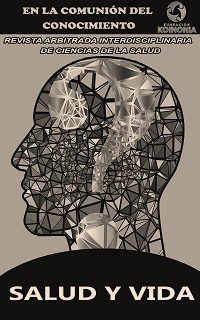Nursing care in the prevention of pneumonia associated with mechanical ventilation
DOI:
https://doi.org/10.35381/s.v.v7i1.3564Keywords:
Intensive care units, artificial respiration, emergency treatment, (Source: DeCS)Abstract
Objective: to analyze nursing care in the prevention of ventilator-associated pneumonia. Method: Descriptive documentary. Results and Conclusion: The nursing professional should propose strategies to prevent VAP in ICU, for example, aspects such as: 1. to perform an optimal work with the cleaning of the mechanical ventilator and humidifier integrating circuit every 48 hours. The importance of changing posture (if possible) to avoid choking or viruses going to the patient's lungs, 3. The use of treatment with medicine that depends on the diagnosis of the pathogenic organisms that infected the patient with VAP. All this highlights the importance of nursing care for the prevention of VAP, especially in ICU patients over 65 years of age.
Downloads
References
Bureau C, Demoule A. Weaning from mechanical ventilation in neurocritical care. Rev Neurol (Paris). 2022;178(1-2):111-120. http://doi.org/10.1016/j.neurol.2021.08.005
De Jong A, Wrigge H, Hedenstierna G, et al. How to ventilate obese patients in the ICU. Intensive Care Med. 2020;46(12):2423-2435. http://doi.org/10.1007/s00134-020-06286-x
Elkins M, Dentice R. Inspiratory muscle training facilitates weaning from mechanical ventilation among patients in the intensive care unit: a systematic review. J Physiother. 2015;61(3):125-134. http://doi.org/10.1016/j.jphys.2015.05.016
Shang P, Zhu M, Baker M, Feng J, Zhou C, Zhang HL. Mechanical ventilation in Guillain-Barré syndrome. Expert Rev Clin Immunol. 2020;16(11):1053-1064. http://doi.org/10.1080/1744666X.2021.1840355
Robba C, Bonatti G, Battaglini D, Rocco PRM, Pelosi P. Mechanical ventilation in patients with acute ischaemic stroke: from pathophysiology to clinical practice. Crit Care. 2019;23(1):388. http://doi.org/10.1186/s13054-019-2662-8
Huang D, Zhao W, Chen Y, et al. Effect of mechanical ventilation and pulmonary rehabilitation in patients with ICU-acquired weakness: a systematic review and meta-analysis. Ann Palliat Med. 2021;10(9):9594-9606. http://doi.org/10.21037/apm-21-1928
Menges D, Seiler B, Tomonaga Y, Schwenkglenks M, Puhan MA, Yebyo HG. Systematic early versus late mobilization or standard early mobilization in mechanically ventilated adult ICU patients: systematic review and meta-analysis. Crit Care. 2021;25(1):16. http://doi.org/10.1186/s13054-020-03446-9
Li W, Zhang Y, Wang Z, et al. The risk factors of reintubation in intensive care unit patients on mechanical ventilation: A systematic review and meta-analysis. Intensive Crit Care Nurs. 2023;74:103340. http://doi.org/10.1016/j.iccn.2022.103340
Blackwood B, Burns KE, Cardwell CR, O'Halloran P. Protocolized versus non-protocolized weaning for reducing the duration of mechanical ventilation in critically ill adult patients. Cochrane Database Syst Rev. 2014;2014(11):CD006904. http://doi.org/10.1002/14651858.CD006904.pub3
Vásquez Gaibor AA, Reinoso Tapia SC, Lliguichuzca Calle MN, Cedeño Caballero JV. Neumonía asociada a ventilación mecánica [Pneumonia associated with mechanical ventilation]. RECIMUNDO. 2019;3(3):1118-39.
Guilhermino MC, Inder KJ, Sundin D. Education on invasive mechanical ventilation involving intensive care nurses: a systematic review. Nurs Crit Care. 2018;23(5):245-255. http://doi.org/10.1111/nicc.12346
Ramírez Palma Antonio, Calderón Vega Eugenia, Vidal Ortega Johana. Sistemas de aspiración: incidencia en neumonía asociada a ventilación mecánica y efectos hemodinámicos [Suction systems: incidence of ventilator associated pneumonia and hemodynamic effects]. Ene. [Internet]. 2021;15(3):1211.
Miranda-Pedroso R. Neumonía asociada a la ventilación mecánica artificial [Pneumonia associated with artificial mechanical ventilation]. Revista Cubana de Medicina Intensiva y Emergencias [Internet]. 2019 [citado 6 Nov 2023]; 18 (3).
Sarmiento Robles CE, Jiménez León WS, Bello Vinueza CR, Piedra Paladines YY. Neumonía asociada al ventilador, epidemiología, patógenos y factores de riesgo [Ventilator-associated pneumonia, epidemiology, pathogens and risk factors]. Jah. 2021. https://doi.org/10.37958/jah.v0i0.90
Ávila Choez AM, Pineda-Velez R. Relación entre mortalidad y neumonía asociada al ventilador en pacientes de terapia intensiva: Comunicación breve [Relationship between mortality and ventilator-associated pneumonia in intensive care patients: A brief communication]. Rev. Cien. Ecu. 2021;3(1):1-6.
Published
How to Cite
Issue
Section
License
Copyright (c) 2023 Deyci Marilu Cando-Chata, Neris Marina Ortega-Guevara, Ariel Romero-Fernández, María Fernanda Morales-Gomez de la Torre

This work is licensed under a Creative Commons Attribution-NonCommercial-ShareAlike 4.0 International License.
CC BY-NC-SA : Esta licencia permite a los reutilizadores distribuir, remezclar, adaptar y construir sobre el material en cualquier medio o formato solo con fines no comerciales, y solo siempre y cuando se dé la atribución al creador. Si remezcla, adapta o construye sobre el material, debe licenciar el material modificado bajo términos idénticos.
OAI-PMH: https://fundacionkoinonia.com.ve/ojs/index.php/saludyvida/oai.









